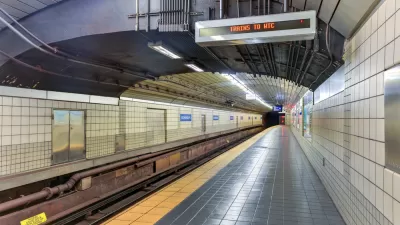Jen Carlson writes about an incredibly ambitious (or naive) plan from 1934 to expand buildable area in New York by paving over the Hudson River.
According to Carlson, the plan was the product of engineering scholar Norman Sper, and envisioned, "damming the river at both ends of Manhattan, and filling in the space... which would 'ultimately connect the Island of Manhattan with the mainland of New Jersey.'
"The 10 square miles of land gained would have, in theory, solved the traffic and housing problems the city was having at the time. There would be more buildings, more streets, and more avenues."
Carlson provides a link to the original article documenting the project, which appeared in Modern Mechanix magazine, and the fantastic illustrations that accompanied it.
FULL STORY: The 1934 Plan To Fill In The Hudson River, Connecting NYC To NJ

Maui's Vacation Rental Debate Turns Ugly
Verbal attacks, misinformation campaigns and fistfights plague a high-stakes debate to convert thousands of vacation rentals into long-term housing.

Planetizen Federal Action Tracker
A weekly monitor of how Trump’s orders and actions are impacting planners and planning in America.

In Urban Planning, AI Prompting Could be the New Design Thinking
Creativity has long been key to great urban design. What if we see AI as our new creative partner?

King County Supportive Housing Program Offers Hope for Unhoused Residents
The county is taking a ‘Housing First’ approach that prioritizes getting people into housing, then offering wraparound supportive services.

Researchers Use AI to Get Clearer Picture of US Housing
Analysts are using artificial intelligence to supercharge their research by allowing them to comb through data faster. Though these AI tools can be error prone, they save time and housing researchers are optimistic about the future.

Making Shared Micromobility More Inclusive
Cities and shared mobility system operators can do more to include people with disabilities in planning and operations, per a new report.
Urban Design for Planners 1: Software Tools
This six-course series explores essential urban design concepts using open source software and equips planners with the tools they need to participate fully in the urban design process.
Planning for Universal Design
Learn the tools for implementing Universal Design in planning regulations.
planning NEXT
Appalachian Highlands Housing Partners
Mpact (founded as Rail~Volution)
City of Camden Redevelopment Agency
City of Astoria
City of Portland
City of Laramie





























